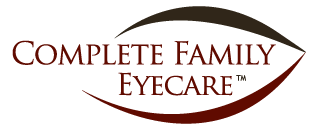Amniotic Tissue Membrane use in treating corneal problems and dry eye
Amniotic tissue membranes (ATM) have been shown to have numerous uses in wound healing and prevention of scar tissue on the eye and other parts of the body. ATM is harvested from placenta of consenting mothers after cesarean section births. It is then frozen or dehydrated for storage. ATM grafts for the eye are about the size of a dime and resemble a thin sheet of cellophane. They are completely clean and safe for use on the surface of the eye. ATM has several uses in eyecare which primarily include corneal abrasion, recurrent corneal erosion, and dry eye.
A corneal abrasion is a common injury in which the cornea is scratched by a fingernail, stick, or other foreign body which causes disruption of the corneal surface. Here is a link to the symptoms of a corneal abrasion. The primary symptom of a corneal abrasion is PAIN. Other symptoms may include light sensitivity, foreign body sensation, and eye watering. The goal for treatment of a corneal abrasion is to allow for quick healing, and prevention of infection and scarring. The current most effective treatment for a corneal abrasion is the application of a soft “bandage” contact lens and antibiotic drops. This usually allows for fairly quick healing and infection prevention. However, incomplete corneal healing and scarring can still occur especially in deeper corneal abrasions. Scarring of the cornea can cause permanent vision loss. The application of an amniotic tissue membrane under the bandage contact lens in direct contact with the corneal allows for much faster wound healing and prevention of scarring.
A recurrent corneal erosion (RCE) is a common problem resulting from incomplete healing of corneal abrasion or other corneal injury or inflammation. As the name suggests, an RCE is a problem that recurs repeatedly over the course of months or even years as the corneal wound temporarily heals but breaks open again and again resulting the same pain and agony of the initial injury. AMT membrane application under the bandage contact lens at the time of injury has been shown to greatly reduce the rate of RCE. An existing RCE has also been shown to heal more completely with reduced chance of reoccurrence after the application of an ATM.
Dry eye syndrome is another condition which can benefit from ATM treatment. Chronic dry eye can lead to a chronically inflamed cornea and scarring of the cornea. ATM treatment allows for corneal healing and comfort which can last for several months or more especially if continued lubrication and other dry eye therapies are used after ATM treatment.
AMT membranes are applied in our office under topical (eyedrop) anesthesia in about 5 minutes. The membrane will remain under the contact lens until it dissolves in about one to two days but it recommended that the contact lens remain on the eye for five to seven days or longer depending on the condition. ATM treatment is covered by most insurances and Medicare.
If you or anyone you know has had a corneal injury or dry eye problem that could benefit from AMT, please call out office to schedule an appointment. Thanks and best wishes for great vision!
Dr. Steve
